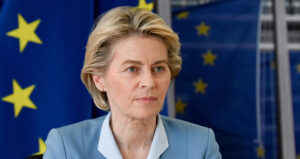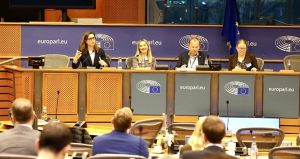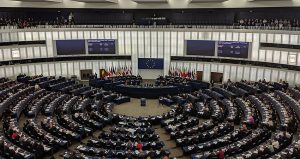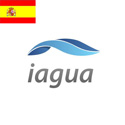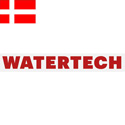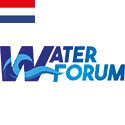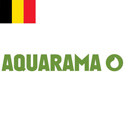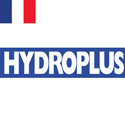Work on Water Resilience Strategy has finally taken off

-
 Esther Rasenberg
Esther Rasenberg
Share article:
EU Commissioner Jessika Roswall, responsible for Environment, Water Resilience, and a Competitive Circular Economy, shares her vision for the strategy in an interview with Water News Europe. Soon, the European Commission will publish a country-by-country assessment of how well Member States are implementing the EU water legislation. A call for evidence will be launched, offering stakeholders an opportunity to provide input and contribute to the strategy’s design. These actions mark the beginning of the long-awaited work on the Water Resilience Strategy.
Why do we need a Water Resilience Strategy?
“Water is increasingly under pressure, and we cannot take it for granted. We need to strategically think about this resource – just like we have done on energy. We must map this emerging critical risk because this is about our preparedness, resilience, and economic security. I am pleased that water is – for the first time – mentioned in the job title of a Commissioner. I am proud to be the Commissioner for Water Resilience. I will work together with Member States, the European Parliament, EU businesses and different stakeholders, to ensure a more sustainable and resilient water future for Europe and beyond. The challenge of the task is immense. Sustainable water management, water resilience and dealing with water excess and water scarcity at the same time are key challenges for the future of the EU and its Member States. Water supports people, agriculture, infrastructure, energy, inland navigation and overall entire ecosystems and the ecosystem services they provide. It is key to our economic security in Europe and it is key to global security.“
Do you believe a Water Resilience Strategy is more important now than ever?
“The water resilience strategy is among the top priorities of the new Commission for good reasons. Water is vital, for all aspects of life. And the EU’s competitiveness and prosperity depend on the availability of sufficient clean freshwater. However, the water cycle is broken, and our water supply is under threat. Only 37% of our surface water achieves good ecological status and only 29% good chemical status. Floods in Europe have caused € 170 billion in economic damage over the past 30 years. We’re not well equipped for the increasing whiplash of floods and droughts. Decades of mismanagement, unsustainable land use, ecosystem degradation, pollution, and urbanization are placing significant pressure on the EU’s water resources, while climate change and increasing demand for water add pressure. To secure our food, energy and economy, and reduce exposure to water risks we need to put in place a transformative agenda which is better equipped to adapt to the existing and future water challenges and leaves no-one behind. We need a change in mindset on the way water is managed, used, and valued, while protecting natural ecosystems. I aim to present the strategy in 2025, the overall goal is to address the root causes of water stress, preserve water quality and quantity in Europe and boost the competitive edge of Europe’s water industry.”
Many organisations and Member States are eagerly awaiting the new strategy. When will work begin?
“We have already started working on this initiative. In the next weeks, the Commission will publish a country-by-country assessment of how well Member States are implementing the EU water laws. Together with the European Environment Agency’s State of Water Report released last year, this all will give us a robust basis to develop the Water Resilience Strategy which will be launched later this year. I will also engage in broad stakeholder consultations in the run-up to the strategy.”
How will you ensure the process involves all stakeholders?
“Water cuts across so many areas – quality, quantity, climate adaptation, water management, crisis preparedness, and so many sectors – agriculture, infrastructure, industry, energy, land use, public health. It’s essential to have an inclusive and holistic approach when designing the strategy. I look forward to developing this strategy in close cooperation with my colleagues in the Commission, with stakeholders and with the public. More than 75% of EU citizens believe that the EU should take more measures to address water issues. The Water Resilience Strategy responds to this expectation, to map out a path to water resilience. We intend to seek views from Member States, EU institutions and stakeholders, including local authorities, the private sector, NGOs, and citizens. In a few weeks the Commission will launch a call for evidence to provide stakeholders with an opportunity to share input and help design the strategy.”
Is there funding to design and implement the Water Resilience Strategy?
“Under the Water Resilience Strategy, we will encourage both public and private investments to ensure that the EU can become a water smart economy. The Commission will also continue to provide support through EU funding under the different EU funding instruments. In particular our Cohesion Policy is key to support Member States’ investments in the water sector and I strongly encourage Member States to complete water resilience projects under the current cohesion programmes as well as making the best use of the agriculture funding envelope to support a water-smart agricultural sector. The next EU budget will also be important in this context. We have to bear in mind that public investments alone may not be sufficient to transition to a water resilient EU. Private financing can help bridge investment gaps. This is why I want to work closely with the European Investment Bank to promote private investments in the water sector.”
How much funding are we talking about?
“The current annual investment for water measures in the EU (by the EU, European Investment Bank and national budgets) is approximately EUR 63 billion, with financial support available in the case of severe natural disasters through the EU Solidarity Fund, which has so far distributed over EUR 800 million since 2021. EUR 1.6 billion has also been made available through the Connecting Europe Facility. Nevertheless, there is a significant investment gap that needs to be filled, through public and private financing. Financing is going to be an integral part of the strategy. The Commission will look into leveraging its resources to ensure this strategy is a success.”
Is there anything else you would like to share with our readers?
“The Water Resilience Strategy will also help boost new business opportunities. We should be proud over the fact that 40 percent of the patents for water management are made in the EU. This is a huge competitive advantage. We need to capitalize on this enormous innovation capacity and make sure those innovations benefit our companies and citizens. This is a clear case where what is good for nature is also good for business.”
History of Water Resilience Strategy
On January 15, Roswall delivered a keynote speech on water resilience. This marked her first public address on the Water Resilience Strategy since beginning her term as EU Commissioner. In December 2024, Members of the European Parliament emphasized water as a key priority. Previously, in July 2024, the European Council included water resilience in the 2024-2029 strategic agenda, following the former European Commission’s postponement of the Water Resilience Initiative in February 2024. In September 2024, Von der Leyen put the Water Resilience Strategy back on the table. Roswall, who started in December 2024, has now set the Water Resilience Strategy in motion.



